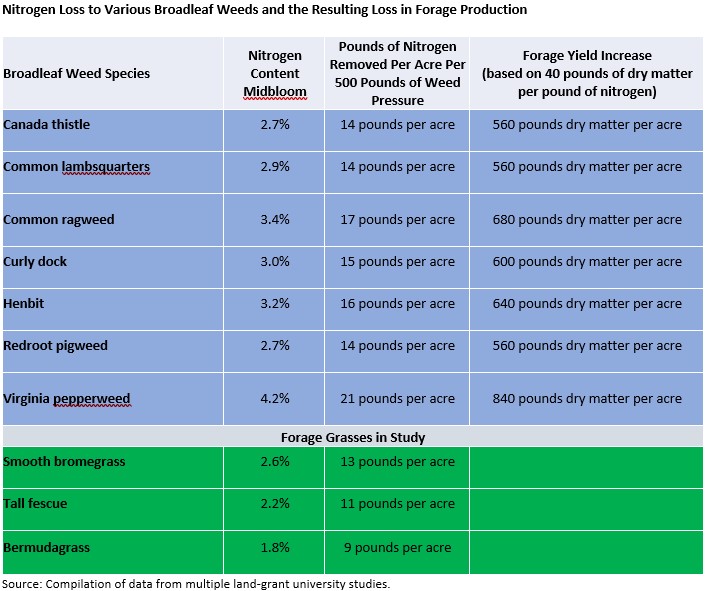Connect with Range & Pasture:
What Does a Weed Cost? More Than You May Think

It’s hard to go wrong growing more grass.
–Old Ranching Proverb
It’s hard to go wrong growing more grass.
–Old Ranching Proverb
Grass and grazing space are valuable.Regardless of grain prices, market conditions or other factors, it makes sense to grow all the grass you can. But how do we get there?
“Years of data collection across the country established the standard that every pound of broadleaf weeds eliminated in the pasture returns at least a pound to a pound-and-a-half of forage,” says Sam Ingram, a field scientist with Corteva Agriscience Range & Pasture.
Forage response depends on weed and grass species present, soil type, moisture and other factors. When Ingram analyzed data from several university trials, nitrogen rose to the top as a primary limiting factor.
“Most common broadleaf pasture weeds contain about 3% nitrogen at the midbloom stage,” Ingram explains. “A moderate weed infestation level produces about 500 pounds of weeds per acre. So those weeds are stealing 14 pounds to more than 20 pounds of nitrogen per acre.”
It begs the question: What could productive forage grasses do with that nitrogen?
A successful weed control program in effect gives nitrogen back to the forages to grow more grass. The accompanying table shows how much nitrogen various weed species rob and the pounds of dry matter that lost nitrogen potentially could produce.
“Certain grass species, bermudagrass for example, exhibit a greater response to nitrogen; thus, the dry matter production is higher,” Ingram says. “Regardless, grass replaced each of the weed species pound for pound, at least.”
Ingram says this information reinforces two important points:
Whether that extra forage goes toward increasing stocking rates, extending the grazing season, or putting up extra hay, an abundant, high-quality forage base gives cattle producers the flexibility to manage according to the goals of their individual operations.
“More grass means more pounds of beef per acre. In today’s market, that’s a significant impact on the income side of the equation,” Ingram says.

Under normal field conditions, DuraCor® is nonvolatile. DuraCor has no grazing or haying restrictions for any class of livestock, including lactating dairy cows, horses (including lactating mares) and meat animals prior to slaughter. Label precautions apply to forage treated with DuraCor and to manure and urine from animals that have consumed treated forage. DuraCor is not registered for sale or use in all states. Consult the label for full details. UltiGraz℠ with fertilizer is available for use with specific herbicides in the states of AL, AR, CO, FL, GA, HI, IA, ID, KS, KY, LA, MN, MO, MS, MT, NC, ND, NE, NV, OK, OR, SC, SD, TN, TX, UT, VA, WA, WI, WV and WY. Contact your state pesticide regulatory agency to determine if a product is registered for sale or use in your state. Always read and follow label directions.